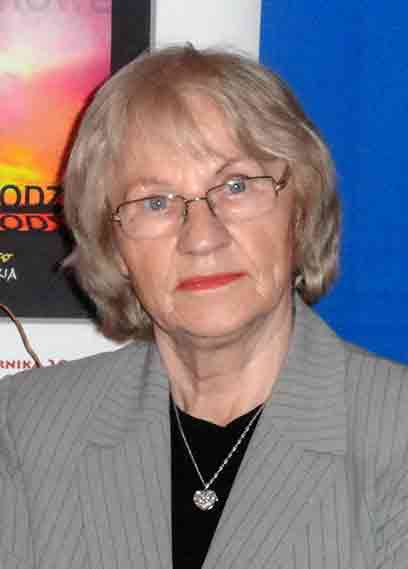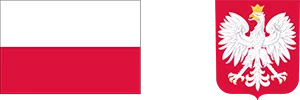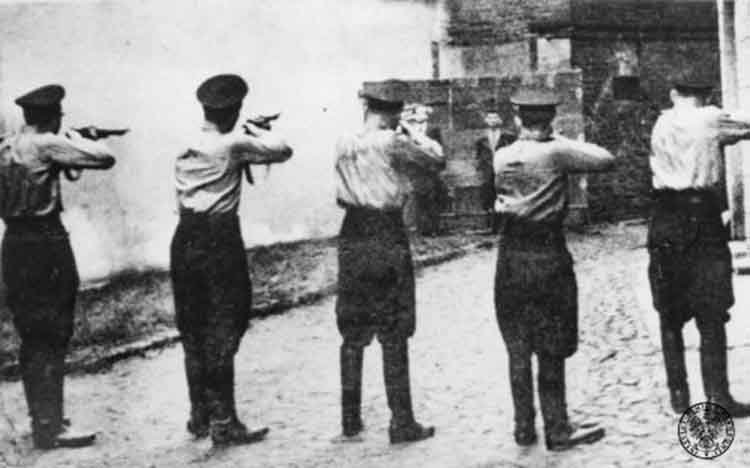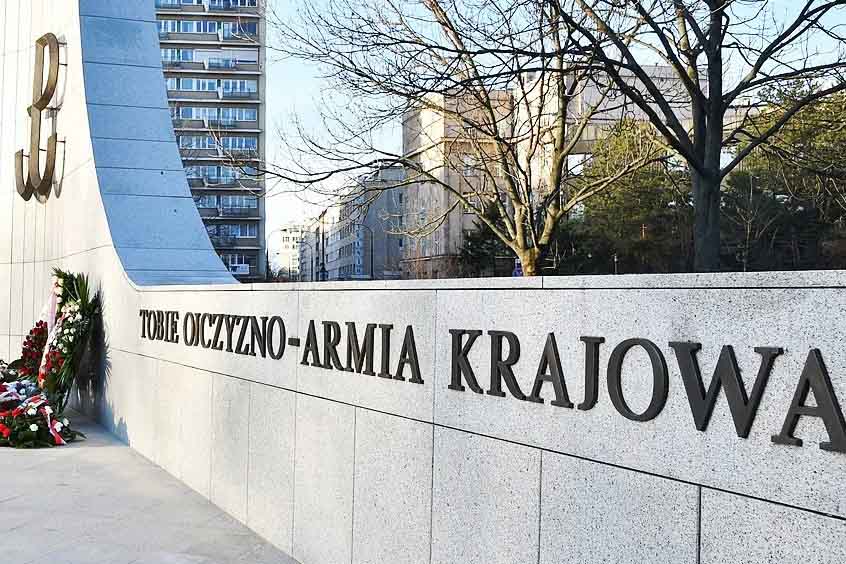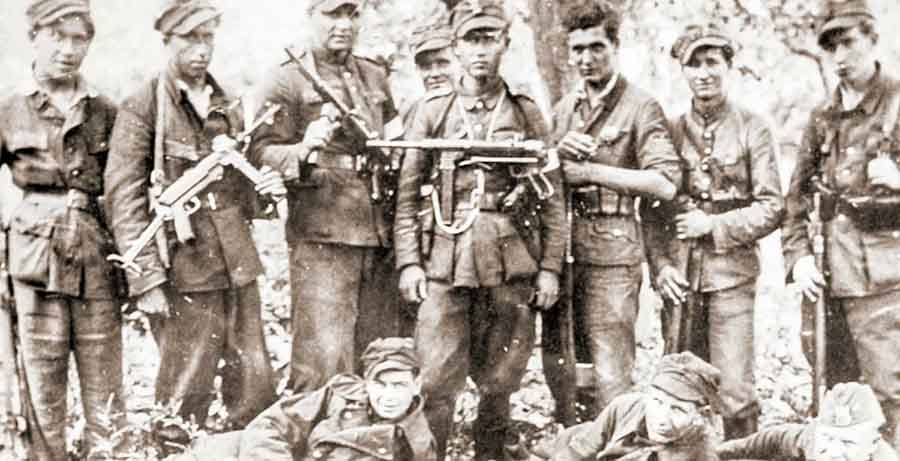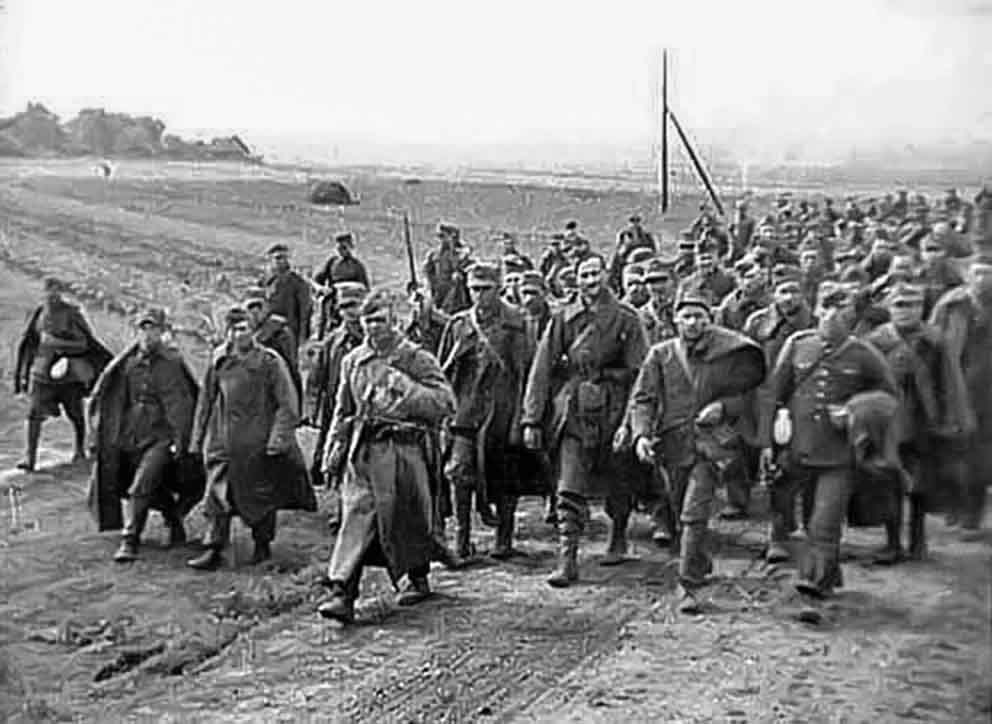«Nations losing their memory lose their lives» - Inscription on a plaque in front of the Na Pęksowym Brzyzku cemetery in Zakopane.
Historical context
In January 1945, the Red Army crossed the eastern border of the Second Polish Republic. Initially, the Home Army, acting as host, established contacts with Soviet partisans and military command to fight the common enemy—Germany.
Initially, the Soviet authorities eagerly utilized the assistance of Polish armed forces, and it seemed that cooperation would flourish. However, after the liberation of the territories, it turned out that the Russians had become the masters, and Polish soldiers were hostile to the new authorities, who, at Moscow's behest, were perpetuating the communist system. Members of the Polish patriotic underground were arrested and, either immediately or after being imprisoned in camps or prisons, subjected to repression, most often deported deep into Russia to labor camps.
This was the end of "Operation Ostra Brama" in Vilnius and "Wysoki Zamek" in Lviv. Historians estimate that as many as 200,000 people may have been repressed because of this. Anticipating the potential resistance from Poles, the new occupation authorities ordered pacification operations in January 1945. These included roundups of civilian and military activists of the patriotic underground, particularly soldiers of the Home Army and the National Armed Forces (NSZ).
In February 1945 there was the Upper Silesian Roundup, after which about 40,000 prisoners were deported to eastern Russia, then there was the Pomeranian Roundup with 18,000 deportees and in July 1945, the most tragic one – the Augustów Roundup.
The Augustów Roundup
The Augustów Roundup is one of the most tragic and least investigated crimes against the Polish population committed by the Red Army, NKVD, and Polish communist services. It took place in July 1945, after the end of World War II, at a time when the Red Army was returning home, celebrating Victory Day, and the authorities were preparing for the Potsdam Conference, which was to confirm the Yalta agreements.
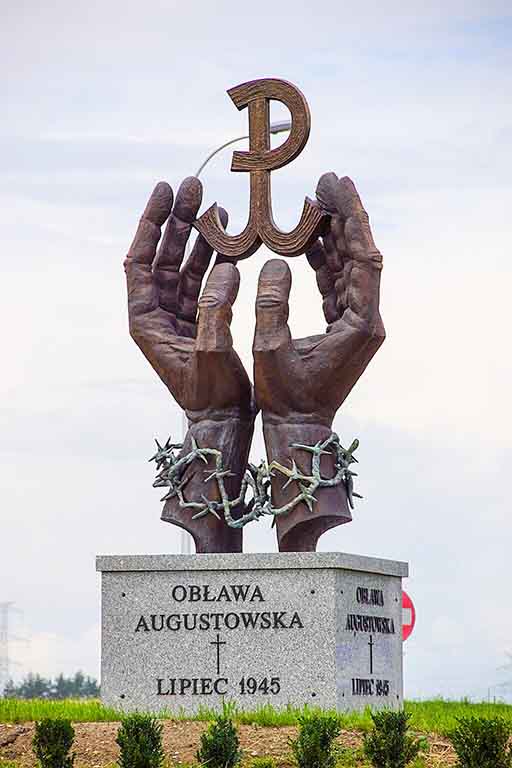
Monument to the Victims of the Augustów Roundup in Suwałki, photo by Kamil Korbik, 2018 (Source: Wikipedia)
It was already clear that Poland would fall under Soviet influence and that its borders would shift westward. NKVD units (the People's Commissariat for Internal Affairs—a kind of political police) controlled the lands of northeastern Poland, while the Polish Committee of National Liberation (PKWN)—a communist government subordinated to Moscow—was taking over power in the country. This period was characterized by the brutality of the communist authorities, rapes, robberies against the Polish population, and the plundering of public and private property.
Over 100,000 Soviet soldiers, primarily NKVD units, were deployed on Poland's eastern frontiers to strengthen communist rule. The patriotic Polish underground became active against these actions. Both the Suwałki and Augustów counties were controlled by the Polish independence underground. Polish partisans fought against local communist government agencies and the apparatus of repression. Throughout the Białystok voivodeship, the Polish underground carried out 186 retaliatory operations. In Suwałki County, for example, 17 of the 18 Citizens' Militia posts were destroyed. Twenty-three death sentences were carried out against informers and the occupier's most zealous collaborators.
The new occupiers (the Soviets) then began the brutal liquidation of the Polish Underground State, especially the Home Army. A large-scale pacification operation was carried out in the Augustów Forest and its surrounding areas.
The Soviet counterintelligence command, SMERSH, which directed the operation, was located in Augustów. The aim of the operation was to crush partisan units operating on the Polish-Lithuanian border – in the Augustów Forest and adjacent areas. The raid began with a skirmish at Lake Brożane on July 12, 1945, in which almost all the soldiers of the "Grom" unit were killed, and those who survived were finished off by the Red Army.
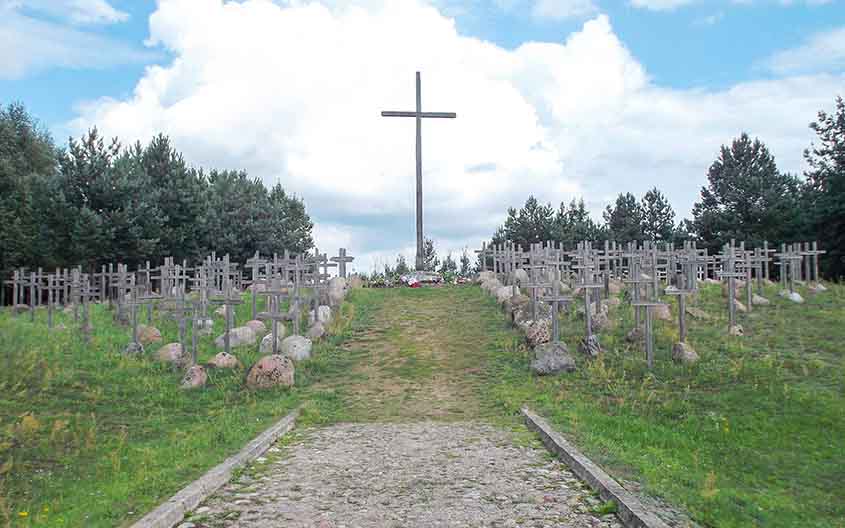
Monument to the Victims of the Augustów Roundup in Giby. (Source: Wikipedia)
Soviet troops, shielded and supported by separate units of the Polish People's Army and the Security Office, participated in the raids. They surrounded the designated area and searched all possible hiding places—forests, public buildings, barns, but also fields where farmers were working (harvest time) and city streets frequented by passersby. All Poles were suspected of contacts with partisans and considered enemies of the new government. As a result of the raid, 7,049 people were detained, of whom 5,115 were released after searches.
Detainees were placed in so-called filtration points established by the Soviets. There were at least fifty of them in all the counties covered by the operation. They were located in barns, pigsties, warehouses, and sheds, sometimes in the basements of buildings in cities. The detainees were subjected to brutal interrogations, accompanied by beatings and torture. Some prisoners were bound with barbed wire or held outdoors in flooded pits.
Approximately 600 people of Polish nationality were deported to an unknown destination, and all trace of them disappeared. They were likely exterminated. Historians suspect they may have been taken to the Grodno area and murdered within the so-called Grodno Forts. Possible execution sites have included Naumowicze, a village in the Grodno Oblast in Belarus, the Lake Goldap region, or the Romińska Forest. Professor Natalia Lebedeva of the Institute of History of the Russian Academy of Sciences even speculated that the Poles may have been sent to a secret camp where chemical weapons experiments may have been conducted.
Attempts to clarify the fate of the victims of the Augustów Roundup
Families of the missing, and later social organizations and the Institute of National Remembrance, made strenuous efforts to obtain information about their loved ones. In November 1945, residents of the Giby commune sent a delegation to Bolesław Bierut to inquire about the fate of the missing residents. In 1958-59, members of the Polish Parliament (Sejm) participated in compiling a list of those missing during the roundup and attempted to intervene on their behalf with the Central Committee of the Polish United Workers' Party (PZPR). Both initiatives met an impenetrable wall, and their initiators were repressed.
In 1987, the Citizens' Committee for the Search for Residents of the Suwałki Region Missing in July 1945 was established. At that time, exhumations of graves in the forest near the village of Giby began, as it was suspected that missing Poles might be buried there. However, it turned out that the trail was false; the graves contained the bodies of German soldiers from World War II.
The Polish People's Republic authorities never officially confirmed the raid and even denied the disappearance of Polish citizens. In 1992, the District Prosecutor's Office in Suwałki initiated an investigation into the Augustów Raid. It was later suspended, and in 2000, it was resumed by the Institute of National Remembrance in Białystok. Initially, the investigation was classified by IPN prosecutors as a communist crime, and since July 2009, also as a crime against humanity.
Beginning in 1992, several requests for legal assistance were submitted to the relevant Russian offices to investigate the crime. The Russian side provided varying responses, ranging from confirming the arrest of 592 people during the raid to stating that there were no documents confirming the shooting of civilians in the Suwałki region.
The Institute of National Remembrance's subsequent requests for legal assistance to the Russian authorities have remained unanswered to this day (80 years after the events). The Augustów Roundup case, eighty years after its occurrence, has not yet been definitively resolved, and therefore it is assumed that the final resting place of the mortal remains of the Augustów Roundup victims remains unknown.
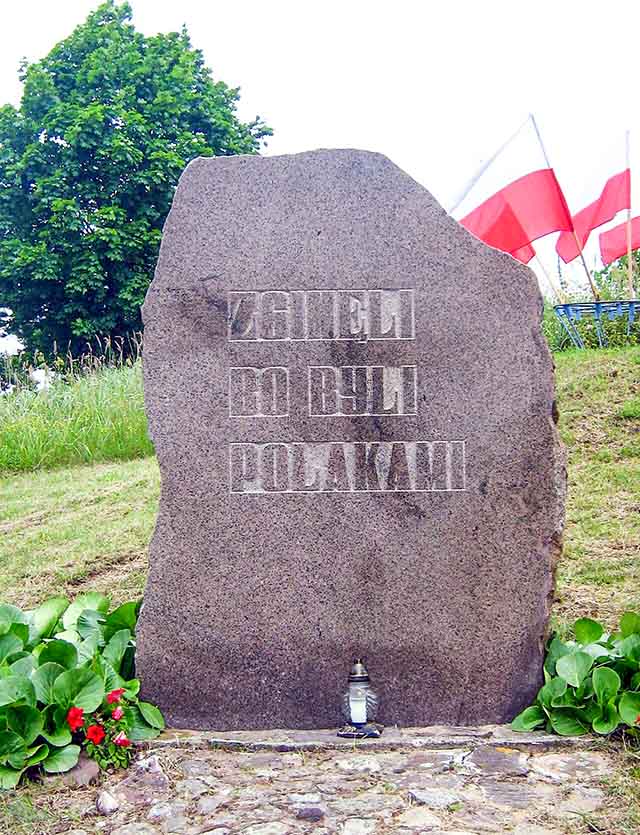
A plaque on the hill in Giby: "They died because they were Poles." (Source: Wikipedia)
The full scale of this crime remains unknown, as arrests were still being made in the area until the end of July 1945, and those detained then also disappeared. According to general estimates, the number of victims may reach 2,000. Determining their identities will only be possible after the release of case files from the archives of the Russian Federation, as well as after exhumation and archaeological work on the territory of the Republic of Belarus, which, given Poland's current political relations with Belarus and Russia, does not promise a quick (or even any) resolution.
The Long Shadow of the Roundup
The Augustów Roundup was mainly attended by the army and internal forces of the NKVD, but they were supported by officers of the local structures of the Polish communist security apparatus and militia, as well as their secret collaborators.
Among those supporting the raid was the 1st Prague Infantry Regiment, commanded by Lieutenant Maksymilian Sznepf (Schnepf), a subunit consisting of two companies (110–160 soldiers). Mirosław Milewski, then an employee of the Security Service (UB), later head of the Ministry of Internal Affairs, also participated in the pacification. Both officers held prominent positions within the communist authorities.
The figure of Maksymilian Sznepf (Schnepf) deserves particular attention, as his case casts a shadow over the actions of the current Polish government. Maksymilian Schnepf (December 10, 1910—August 17, 2003) came from a family of Polish Jews from Drohobych. He was educated in Polish schools. In 1940, he volunteered for the Red Army, and in 1943, joined the 1st Tadeusz Kościuszko Infantry Division. He followed the entire combat trail from Lenino to Berlin. After the war, he pursued a military and academic career, earning the title of certified colonel. He lectured at the University of Warsaw and held many important positions in Polish political life and the socio-cultural life of Polish Jews.
The heirs of his ideological and political legacy are: his son Ryszard, a diplomat currently proposed for the position of ambassador to the United States; his wife Dorota Wysocka-Schnepf, a journalist influencing the formation of public opinion; their daughter Zuzanna Schnepf-Kołacz, vice-consul of the Republic of Poland in Milan.
According to Polish patriots, they should not represent Poland's democratic and historical raison d'état, nor should they occupy prominent political positions. This is viewed with disdain, even frowned upon, by Polish patriots.
Let's remember!
During the decades of communism, the Polish People's Republic authorities blocked investigations into the Augustów Roundup. The topic was censored or completely ignored.
On February 19, 2015, the Law and Justice Parliamentary Club submitted a bill establishing July 12 as the Day of Remembrance for the Victims of the Augustów Roundup. The bill includes the following words: "The memory of this crime should be an important element of Polish national consciousness, and knowledge of the Augustów Roundup should be properly reflected in school curricula." This resolution constitutes a commitment formulated by the Sejm for the government, and in practice this means a commitment for the Minister of National Education.
Despite the passage of 80 years since this act of genocide and 35 years of Polish sovereignty, knowledge about the Augustów Roundup remains incomplete and largely a blank slate in our history. Above all, we still do not know the exact number of victims or the final resting place of their remains.
However, for the memory of this crime to become—in accordance with the intention of the Sejm resolution and an obvious national need—a part of Poland's collective consciousness, currently available information about it should be present "in school curricula." Will there be room for such information in the "slimmed-down core curriculum" of the new Ministry of National Education reform? Will there be a will to recognize such information as important for Polish students and citizens?
Despite the deliberate suppression of access to knowledge about certain historical events, Poles remember; the Polish nation still lives, endures, and remembers. To commemorate the victims of the Augustów Roundup, a monument designed by Andrzej Strumiłło was erected in Giby in 1987. Annual commemorations of the Roundup's anniversary are held there, along with exhibitions and scholarly sessions devoted to the event.
In Poland, there is a "Citizens' Committee for the Search for Residents of the Suwałki Region Missing in July 1945" and the "Union of Remembrance of the Victims of the Augustów Roundup of 1945", headed by Father Stanisław Wysocki.
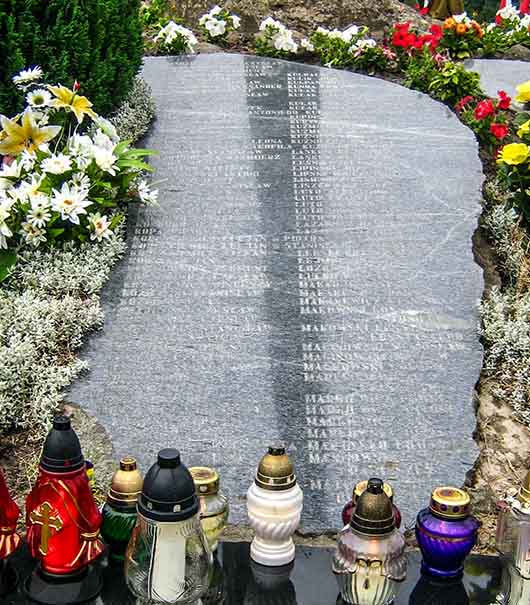
A plaque with the names of the fallen and missing in Giby (Source: Wikipedia)
In 1991, following the exhumation in Giby, a cross was placed on the symbolic grave of the missing, with the names of 530 people inscribed next to it. This memory must endure until the truth is fully revealed, which, we deeply believe, will one day come.



